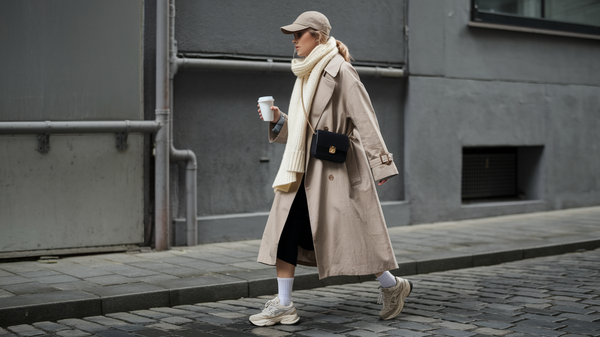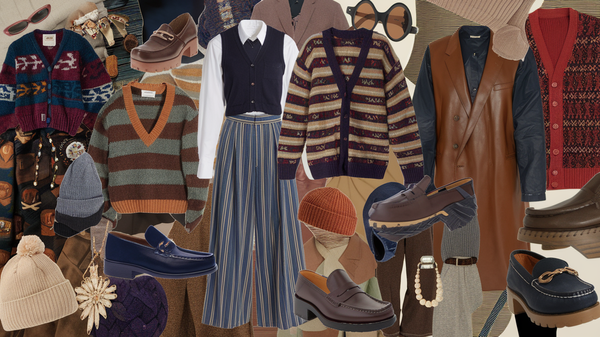How to Find the Best Colours for Your Skin Tone

Understanding the best colours for your skin tone can significantly boost your confidence and enhance your appearance. Whether you're looking to refresh your wardrobe or just curious about which shades suit you best, this article will provide practical insights and tips and aims to simplify the process of colour analysis, making it accessible for everyone
Key Takeaways
- Colour analysis helps you identify shades that enhance your natural beauty.
- Knowing your skin undertone - warm or cool - is essential for selecting the right colours.
- Experimenting with different colours at home can reveal what looks best on you.
- Seasonal palettes provide a structured way to choose colours that complement your skin tone.
- Incorporating your best colours into clothing and makeup can boost your overall confidence.
Understanding Colour Analysis
The History of Colour Analysis
Colour analysis has evolved over the years, starting from the early theories of colour in art and design. The concept gained popularity in the 1980s with Carole Jackson's book, "Colour Me Beautiful," which introduced the idea of seasonal colour palettes. This method categorises individuals into four seasons based on their skin tone, hair, and eye colour, helping them identify which colours enhance their natural beauty.
The Science Behind Colour Analysis
Colour analysis is based on the idea that certain colours can either complement or clash with your natural features. Understanding your skin tone is crucial, as it determines which shades will make you look vibrant and healthy. The science involves studying the undertones of your skin, which can be warm, cool, or neutral.
Benefits of Knowing Your Colours
Knowing your best colours can significantly impact your confidence and appearance. Here are some key benefits:
- Enhances your natural beauty: Wearing the right colours can make you look healthier and more radiant.
- Simplifies shopping: Understanding your colour palette helps you make better choices when buying clothes.
- Boosts confidence: Wearing colours that suit you can improve your self-esteem and how others perceive you.
Colour analysis is the process of figuring out which colours complement you the most. This depends on a variety of factors, like your natural features.
By embracing colour analysis, you can transform your wardrobe and enhance your overall look, making it easier to express your unique style.
Identifying Your Skin Tone
Warm vs Cool Undertones
Understanding your skin undertone is essential for choosing the right colours. There are three main types of skin undertones: warm, cool, and neutral. Warm undertones have a yellow or golden hue, while cool undertones have a pink or blue hue. Neutral undertones are a mix of both.
How to Determine Your Undertone
To find out your undertone, you can try the following methods:
- Jewellery Test: Try on gold and silver jewellery. If gold looks better on you, you have warm undertones; if silver is more flattering, you are cool-toned.
- White Paper Test: Hold a piece of white paper next to your face. If your skin looks yellowish, you are warm-toned. If it appears pink or rosy, you are cool-toned.
Common Misconceptions About Skin Tones
Many people believe that skin tone is solely determined by how they tan or burn in the sun. However, this is not always accurate. Skin tone is more about the underlying hues in your skin rather than how it reacts to sunlight.
Understanding your skin tone can help you make better choices in clothing and makeup, leading to a more confident you!
Seasonal Colour Palettes
The Four Main Seasons
Understanding your seasonal colour palette can greatly enhance your wardrobe choices. The four main seasons are:
- Spring: Bright and warm colours like coral, peach, and light green.
- Summer: Soft and cool shades such as lavender, soft pink, and powder blue.
- Autumn: Rich and warm tones including olive green, burnt orange, and mustard yellow.
- Winter: Bold and cool colours like royal blue, emerald green, and stark white.
Sub-Seasonal Palettes Explained
Each main season can be further divided into sub-seasons, allowing for a more tailored approach to colour matching.
Choosing Colours Based on Your Season
To find the best colours for you, consider these steps:
- Identify your season: Use tests like the fuchsia versus orange test to see which colours enhance your natural glow.
- Experiment with different shades: Try on various colours in natural light to see what suits you best.
- Seek feedback: Ask friends or family for their opinions on which colours make you look vibrant.
Remember, seasonal colour analysis is a fun way to explore your style. Finding your best colours can boost your confidence and help you feel more comfortable in your skin!
Practical Tips for Colour Matching

Testing Colours at Home
To find the best colours for you, start by testing them at home. Here are some simple steps:
- Gather a variety of fabrics in different colours that you think might suit you.
- Hold them up to your face in natural light to see how they complement your skin tone.
- Take photos to compare how each colour looks on you.
Using Natural Light for Accurate Results
Natural light is your best friend when it comes to colour matching. Here’s why:
- It shows the true colour without any artificial tint.
- It helps you see how colours change throughout the day.
- Always test colours near a window for the best results.
Getting a Second Opinion
Sometimes, a fresh pair of eyes can help. Here’s how to get feedback:
- Ask a friend or family member for their thoughts on the colours you’re testing.
- Consider consulting a professional for a more detailed analysis.
- Remember, their perspective can help you discover colours you might not have considered before.
Finding the right colours can transform your wardrobe and boost your confidence. Analyse yourself to discover your perfect colour palette and unlock your true style potential!
Incorporating Your Colours into Your Wardrobe
Building a Capsule Wardrobe
Creating a capsule wardrobe is a smart way to ensure you always have outfits that suit you. Here are some steps to get started:
- Choose your base colours: Select a few neutral shades that work well with your skin tone.
- Add accent colours: Incorporate a few vibrant colours that complement your undertones.
- Mix and match: Ensure that all pieces can be combined to create multiple outfits.
Mixing and Matching Colours
When it comes to mixing colours, remember:
- Stick to a palette: Use colours from your seasonal palette to maintain harmony.
- Balance bold with neutral: Pair bright colours with neutral tones to avoid overwhelming your look.
- Experiment with patterns: Don’t shy away from patterns; just ensure they include your chosen colours.
Accessorising with Confidence
Accessories can elevate your outfit. Here’s how to choose:
- Select statement pieces: Choose accessories in your accent colours to draw attention.
- Consider your skin tone: Gold or silver jewellery can enhance your overall look based on your undertone.
- Layer wisely: Don’t overdo it; one or two standout pieces are often enough.
Remember, the right colours can transform your wardrobe and boost your confidence. Embrace your unique palette and enjoy the process of styling your outfits!
Special Considerations for Different Skin Tones

Tips for Darker Skin Tones
When it comes to darker skin tones, there are some specific colours that can really enhance your natural beauty. Here are a few tips:
- Rich, vibrant colours like royal blue, emerald green, and deep purple can look stunning.
- Earthy tones such as terracotta and olive green also complement darker skin beautifully.
- Avoid overly muted or pastel shades, as they may wash you out.
Advice for Fair Skin
For those with fair skin, choosing the right colours can make a big difference. Consider these points:
- Soft pastels and light shades like blush pink and baby blue can be very flattering.
- Avoid harsh colours like stark black or white, which can create too much contrast.
- Jewel tones, such as sapphire and amethyst, can add a lovely pop without overwhelming your complexion.
Adjusting Colours for Medium Skin Tones
Medium skin tones have the flexibility to wear a variety of colours. Here’s how to make the most of it:
- Warm colours like coral and peach can brighten your look.
- Cool colours, such as teal and lavender, can also work well.
- Experiment with both warm and cool shades to find what suits you best.
Remember, the key to finding your best colours is to experiment and have fun with it! Everyone's skin tone is unique, and what works for one person may not work for another.
Want to know which colours make you look your best?
Our 1-1 styling packages at KOTS include an expert colour analysis tailored just for you. We’ll identify the shades that enhance your natural features, so you can feel confident and radiant in every outfit. From vibrant hues to classic tones, we’ll help you create a wardrobe that complements your unique style and personality. Ready to unlock the power of colour?
Explore our 1-1 services here and start your journey to a more vibrant you with KOTS!





